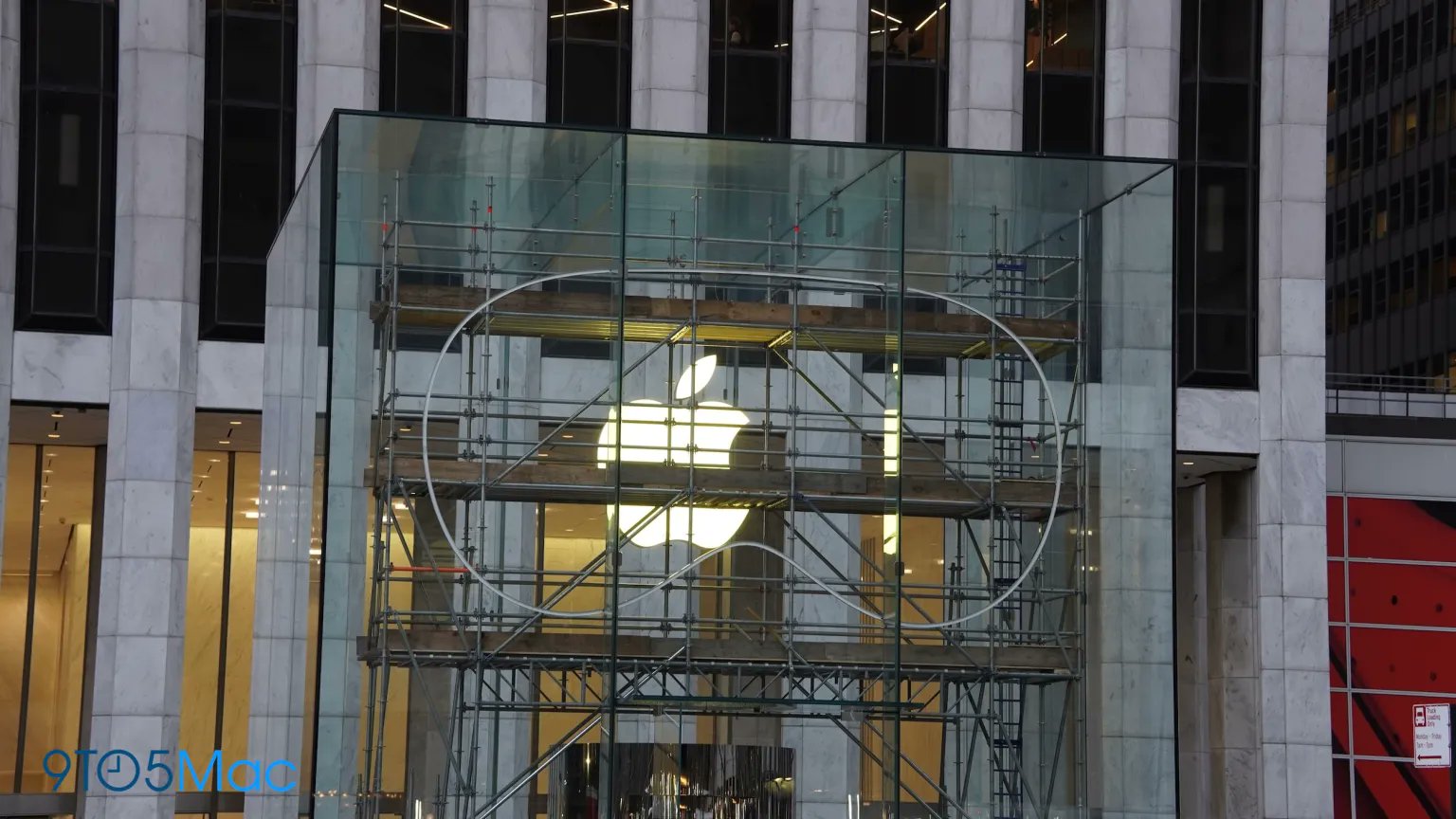Apple is putting the final retail preparations in place for the U.S. launch of its Apple Vision Pro headset on Friday, with dedicated areas in flagship retail stores where customers can test out the headset. But Apple's Fifth Avenue retail store in New York appears to be getting special treatment, with a giant replica Vision Pro headset being constructed within the glass cube.

Photos shared by 9to5Mac show scaffolding in front of the glowing Apple logo in the giant skylight above the centerpiece stairway down to the store, where a window display is being erected in the distinctive shape of the Vision Pro goggles.
It's unclear whether the display is unique to "The Cube" or is set to appear in other retail stores around the country, but Apple is certainly hoping to make a splash at possibly Apple's most high-profile U.S. store, and the promotional installation is sure to catch the eyes of passersby and further rouse queueing customers in case they weren't excited enough already.
Steve Jobs originally hired firm Bohlin Cywinski Jackson to help with the design of Apple's iconic Fifth Avenue store. He and Peter Bohlin worked closely to create the centerpiece stairway made entirely of glass, the material that would become Apple's signature architectural statement in its flagship stores. The Cube boasted 50,000 visitors a week in its first year, and by 2010 grossed more per square foot than any store in the world.
Apple plans to limit sales of the Vision Pro to customers in the United States to start with, before expanding availability to other countries later in the year. The Vision Pro starts at $3,500, and online pre-orders ship to customers on launch day, February 2.
This article, "Apple's Fifth Avenue Store Vision Pro Installation Is Shaping Up to Be a Spectacle" first appeared on MacRumors.com
Discuss this article in our forums
Source: TechRadar

Photos shared by 9to5Mac show scaffolding in front of the glowing Apple logo in the giant skylight above the centerpiece stairway down to the store, where a window display is being erected in the distinctive shape of the Vision Pro goggles.
It's unclear whether the display is unique to "The Cube" or is set to appear in other retail stores around the country, but Apple is certainly hoping to make a splash at possibly Apple's most high-profile U.S. store, and the promotional installation is sure to catch the eyes of passersby and further rouse queueing customers in case they weren't excited enough already.
Steve Jobs originally hired firm Bohlin Cywinski Jackson to help with the design of Apple's iconic Fifth Avenue store. He and Peter Bohlin worked closely to create the centerpiece stairway made entirely of glass, the material that would become Apple's signature architectural statement in its flagship stores. The Cube boasted 50,000 visitors a week in its first year, and by 2010 grossed more per square foot than any store in the world.
Apple plans to limit sales of the Vision Pro to customers in the United States to start with, before expanding availability to other countries later in the year. The Vision Pro starts at $3,500, and online pre-orders ship to customers on launch day, February 2.
Related Roundup: Apple Vision Pro
Buyer's Guide: Vision Pro (Buy Now)
Related Forum: Apple Vision Pro
This article, "Apple's Fifth Avenue Store Vision Pro Installation Is Shaping Up to Be a Spectacle" first appeared on MacRumors.com
Discuss this article in our forums
Source: TechRadar